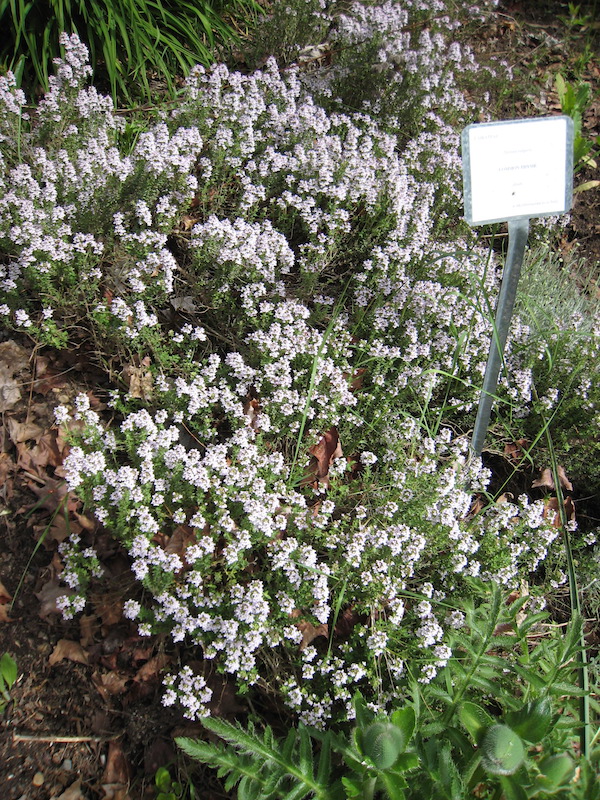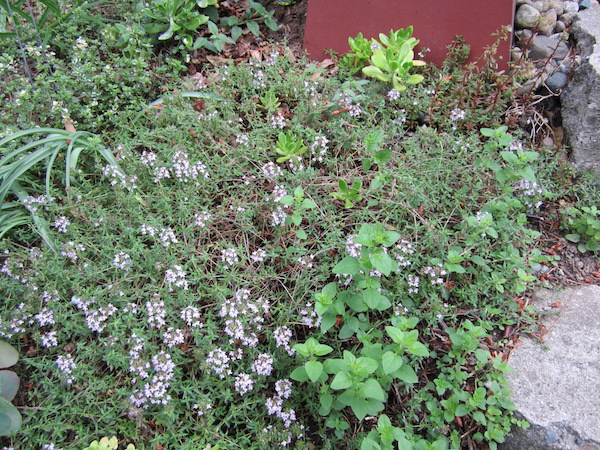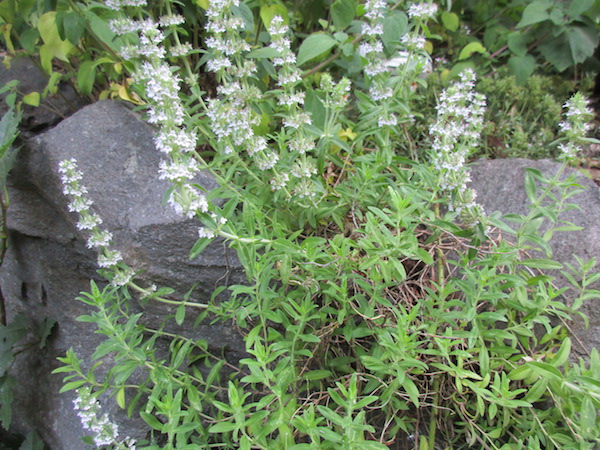Plant of the Month: July 2019
|
| My Three Favorite Thymes Thymus spp. |
LABIATÆ ; Mint Family
|
(LAMIACEÆ)
|
| For decades, the genus Thymus has been a favorite of mine. Having observed, sniffed, tasted and grown many dozens of different kinds, here I share my preferred three species. |
| Over 200 species of Thymus grow, all little plants of pleasing fragrance. They range from Greenland across Eurasia to Japan. At least 42 species are recorded as used by cooks for flavoring, or are made into teas. |
| The concept of species, and naming, is extremely controversial. Some species are genetically separated clearly from other species, even though their visual appearance is very similar. While other species may be genetically indistinguishable, but look clearly different. Hybrids are common. Plants contain essential oil thymol, that is antifungal, antiviral & antibacterial. So in addition to culinary usage as a spicy flavoring, Thyme is medicinal. The vast diversity of scents afforded by this genus is one of the wonders of nature: camphor, caraway, coconut, eucalyptus, lavender, lemon, licorice, mint, nutmeg, orange, oregano, pepper, pine, pineapple, savory, turpentine and varnish! |
The three species I favor above others are as follows.
|
| Thymus vulgaris L. |
| (Common, Garden, Upright or French Thyme) |
| The classic culinary thyme, of rich and famous savor. Some of its hybrids are also sold under its name. Indeed, the "real thing" is relatively uncommon! It is a stiff, wiry little bush a foot or more tall with narrow, dryish leaves. The floppier 'Broadleaf English' and the Silver Thyme ('Argenteus') are hybrids which outnumber it and lack its intensely sharp, hot taste. |
Authentic Thymus vulgaris is completely drought-hardy and its leaves lack the tender succulence of many of the other kinds, so therefore are less valuable to be plucked fresh for nibbling or salads. However, the leaves pack great potency of flavor, so adding some to salad dressing can be an exciting bonus. Not to mention their tremendous value for flavoring meat, eggs, sauces, etc. All cooks will want the real thyme, not merely a diluted substitute hybrid.
|
| Thymus Herba-barona Loisel. |
| (Caraway Thyme) |
My website has an entire 1989 article about this species; here is a link: Caraway Thyme.
|
| Thymus pannonicus All. |
| (Savory-scented or Hungarian Thyme) |
My website has a 1989 article about this species; here is a link: Savory-scented Thyme.
|
Below are three photos of these three species in bloom.
Back |

French Thyme; photo by ALJ
|

Caraway Thyme; photo by ALJ
|

Savory-scented Thyme; photo by ALJ
|
|
|

